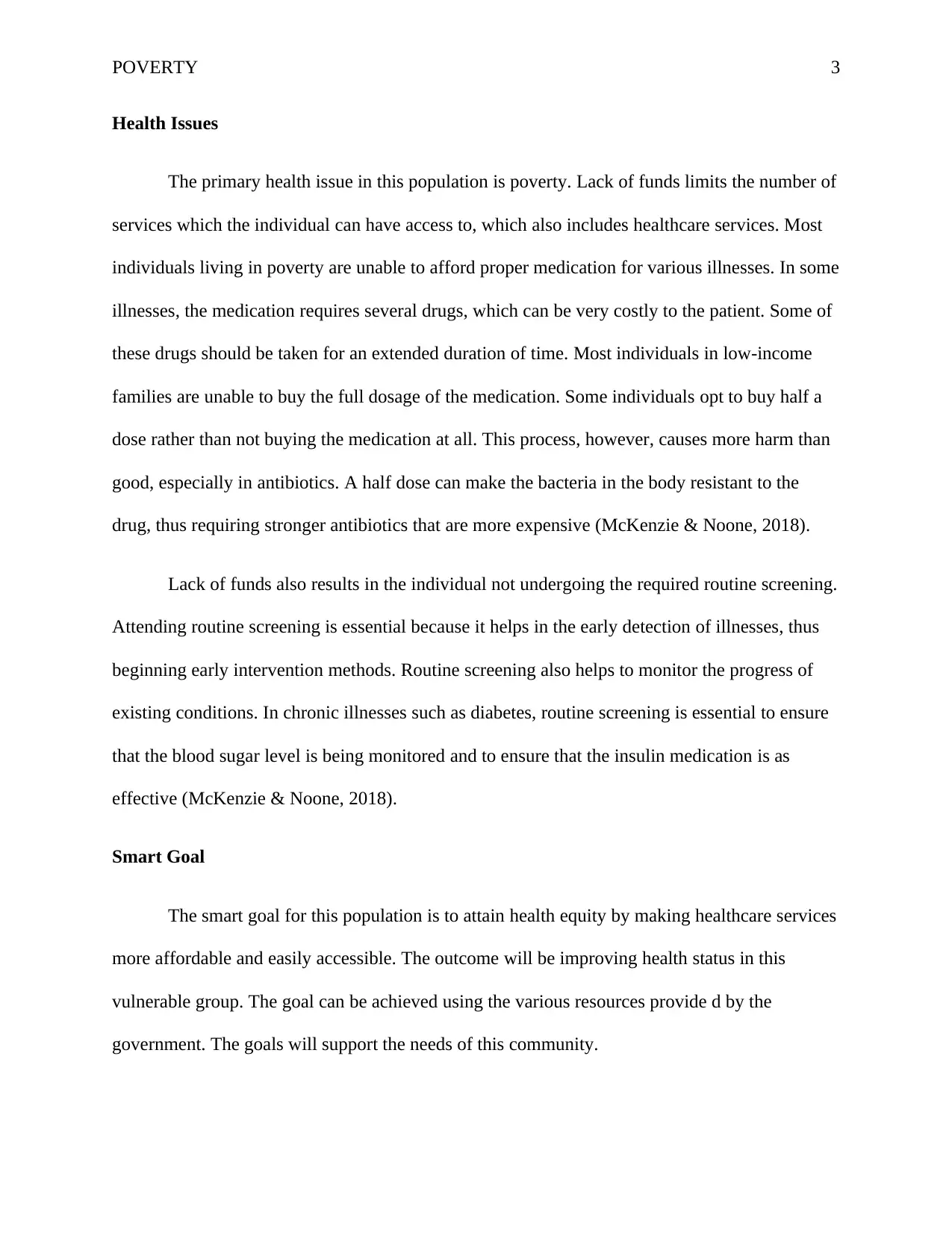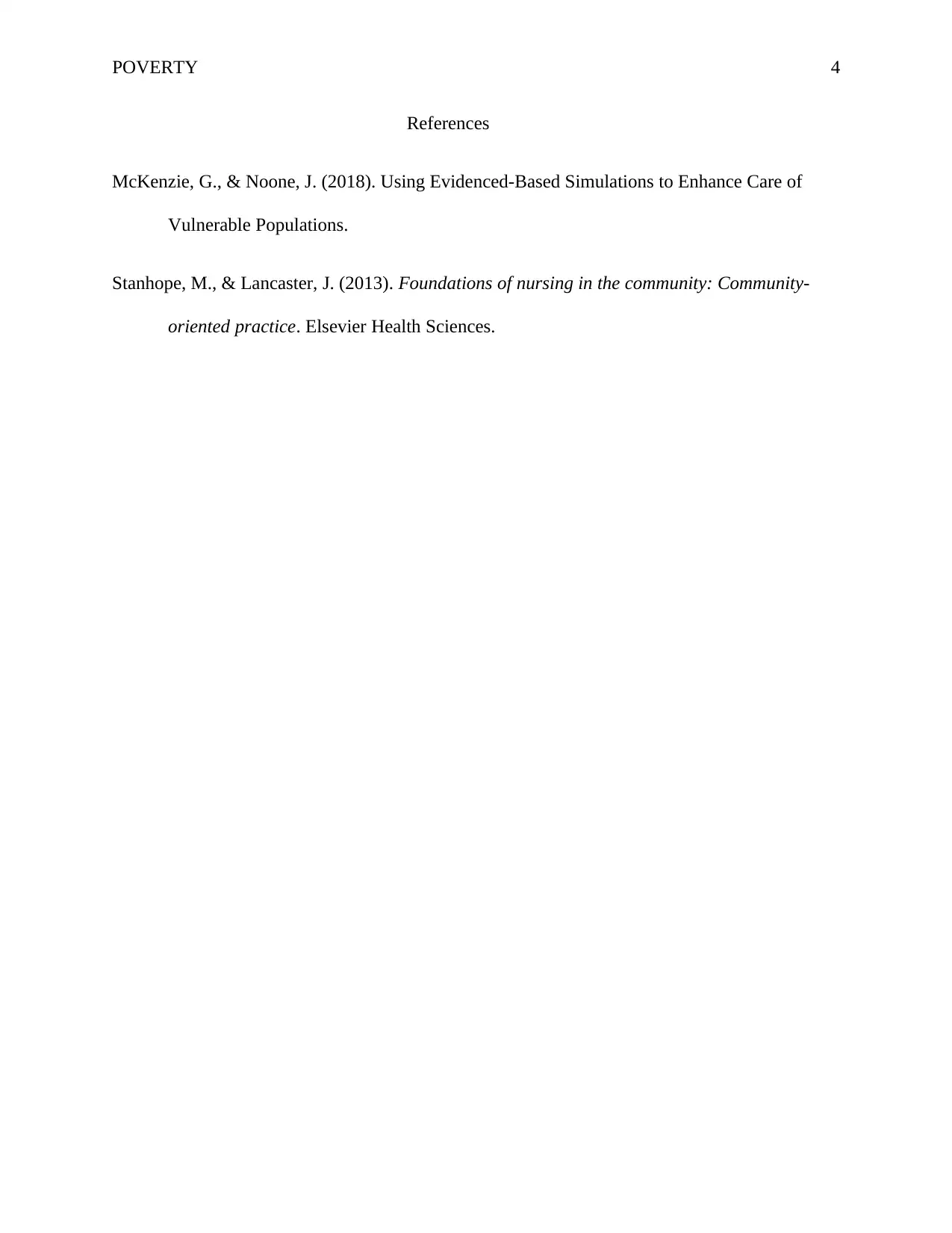Improving Health Equity: Addressing Healthcare Access for the Poor
VerifiedAdded on 2022/08/27
|4
|636
|28
Project
AI Summary
This project focuses on the impact of poverty on healthcare access and health equity, specifically targeting low-income households as a vulnerable population. It identifies key social determinants of health, such as employment conditions, inadequate early child development programs, and health system limitations, which contribute to the poor health outcomes in this group. The primary health issue is identified as poverty itself, limiting access to essential healthcare services, medication, and routine screenings. The project proposes a SMART goal to achieve health equity by making healthcare services more affordable and accessible, leveraging government resources to support the community's needs. References to evidenced-based simulations and community-oriented practices are included to support the analysis and proposed solutions.
1 out of 4











![[object Object]](/_next/static/media/star-bottom.7253800d.svg)